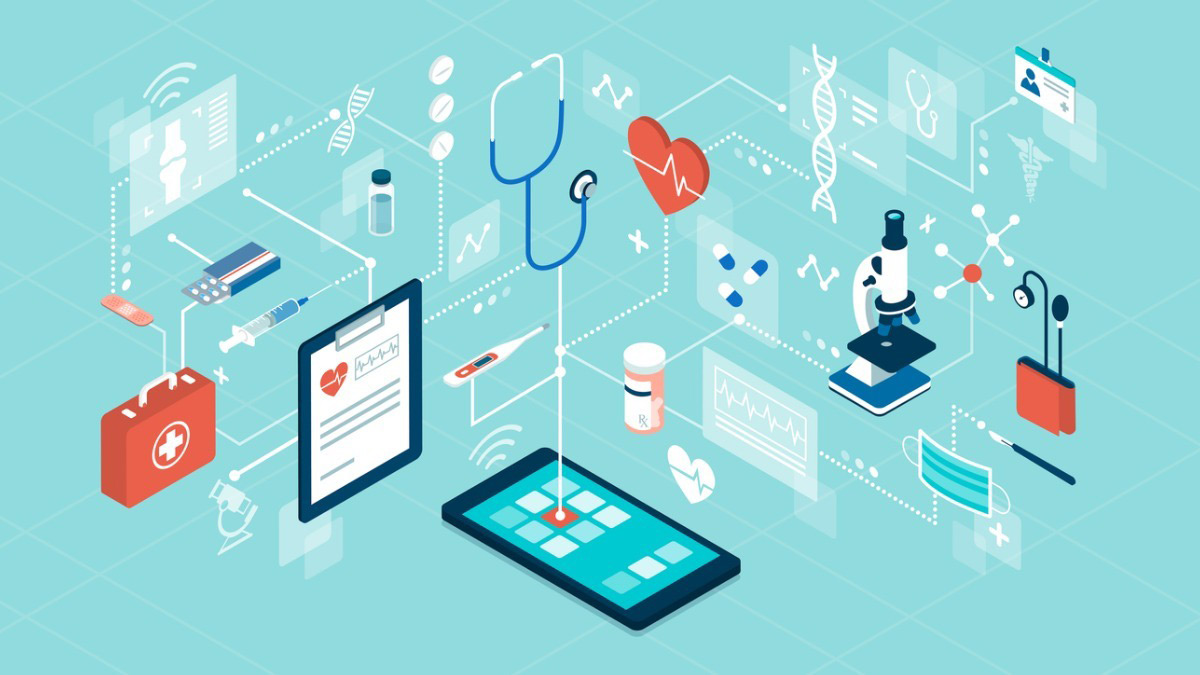Digital Health Tools 2025 sets the stage for this enthralling narrative, offering readers a glimpse into a story that is rich in detail with research style and brimming with originality from the outset. The evolution of digital health tools, the impact of technology advancements, and the exciting trends shaping the landscape await exploration in this comprehensive discussion.
In the span of four years, from 2021 to 2025, digital health tools have undergone significant evolution and transformation. These tools have not only become more advanced in terms of technology but have also become more integrated into daily healthcare practices, revolutionizing the way healthcare is delivered and received.
Key trends shaping the digital health landscape in 2025 include the widespread adoption of telemedicine and remote monitoring technologies.
Impact of Wearable Devices in Healthcare
Wearable devices have become increasingly popular as tools for monitoring health metrics, such as heart rate, sleep patterns, and physical activity. These devices provide individuals with valuable insights into their overall health and wellness, empowering them to take control of their well-being. The data collected by wearable devices can also be shared with healthcare providers to inform treatment decisions and interventions, leading to more personalized and effective care.
Role of AI in Digital Health Tools
Artificial intelligence plays a crucial role in digital health tools by enabling the analysis of large datasets to identify trends and patterns that can inform clinical decision-making. AI algorithms can help healthcare providers diagnose diseases, predict patient outcomes, and recommend personalized treatment plans. By leveraging AI technology, digital health tools in 2025 are able to deliver more precise and efficient healthcare services, ultimately improving patient outcomes and reducing healthcare costs.
Types of Advanced Digital Health Tools

Digital health tools in 2025 are expected to encompass a wide range of innovative technologies that aim to revolutionize the healthcare industry. These tools will not only enhance patient care and outcomes but also improve efficiency and accessibility in healthcare delivery.
AI-Powered Diagnostic Tools
AI and machine learning are set to transform diagnostic tools by 2025, enabling more accurate and timely diagnoses. These tools can analyze vast amounts of data to identify patterns and trends that may not be apparent to human healthcare providers. AI-powered diagnostic tools can help in early detection of diseases, personalized treatment plans, and improved patient outcomes.
Remote Monitoring Devices
Wearable devices and IoT technologies will play a crucial role in remote patient monitoring in 2025. These devices can track vital signs, activity levels, and other health metrics in real-time, allowing healthcare providers to monitor patients remotely and intervene when necessary. Remote monitoring devices can help in managing chronic conditions, preventing hospital readmissions, and promoting overall wellness.
Telemedicine Platforms
Telemedicine platforms are expected to become more sophisticated by 2025, offering a seamless and convenient way for patients to access healthcare services remotely. These platforms enable virtual consultations, remote diagnosis, and digital prescriptions, making healthcare more accessible to individuals in remote areas or with mobility issues. Telemedicine platforms can improve healthcare access, reduce costs, and enhance patient engagement.
User Experience and Accessibility
User experience design plays a crucial role in the effectiveness of digital health tools in 2025. It involves creating interfaces that are intuitive, easy to navigate, and visually appealing to enhance user engagement and satisfaction.
Ensuring accessibility for all individuals using digital health tools is paramount to promote inclusivity and reach a broader population. Accessibility considerations include making tools compatible with assistive technologies, providing multiple language options, and designing features that cater to users with varying levels of digital literacy.
Strategies for User-Friendly
- Personalization: Implementing customization features that allow users to tailor the tool to their specific needs and preferences.
- Clear Instructions: Providing simple and concise instructions on how to use the tool effectively, especially for first-time users.
- Visual Design: Employing a clean and organized layout with easy-to-read fonts, color contrast for readability, and intuitive icons for navigation.
- Feedback Mechanisms: Incorporating feedback loops to gather user input and continuously improve the tool based on user suggestions.
- Training and Support: Offering tutorials, online help resources, and customer support to assist users in navigating the tool and troubleshooting issues.
Data Security and Privacy
Data security and privacy are critical aspects of digital health tools, especially as we look ahead to 2025. With the increasing use of technology in healthcare, ensuring the protection of sensitive health information is paramount to maintain trust and compliance with regulations.
Role of Blockchain Technology
Blockchain technology is poised to play a significant role in securing health data in digital tools by 2025. The decentralized and immutable nature of blockchain makes it an ideal solution for storing sensitive information, such as patient records and treatment histories. By utilizing blockchain, health data can be securely stored in a tamper-proof manner, reducing the risk of unauthorized access or data breaches.
Comparison of Encryption Methods
Various encryption methods are used to protect sensitive health information in digital tools by 2025. Two common encryption techniques include symmetric encryption and asymmetric encryption. Symmetric encryption uses a single key to encrypt and decrypt data, while asymmetric encryption involves a pair of keys (public and private) for encryption and decryption.
- Symmetric encryption: This method is faster and more efficient for encrypting large amounts of data. However, the challenge lies in securely sharing the encryption key between parties without compromising security.
- Asymmetric encryption: While slower than symmetric encryption, asymmetric encryption provides an added layer of security by using different keys for encryption and decryption. The public key can be shared openly, while the private key is kept confidential.
Overall, a combination of encryption methods may be employed in digital health tools to ensure robust data security and privacy measures are in place.
As we conclude this exploration of Digital Health Tools 2025, it becomes evident that the future of healthcare is deeply intertwined with technological innovations.






